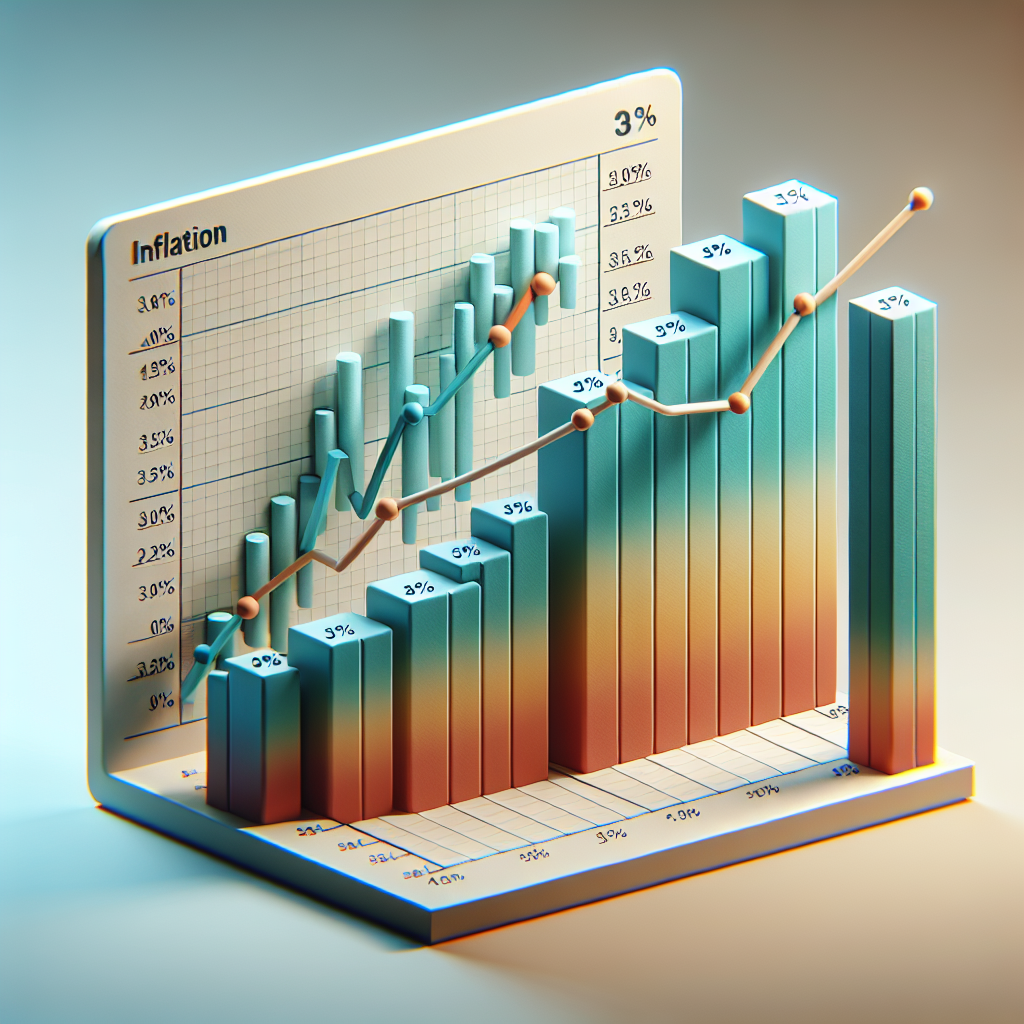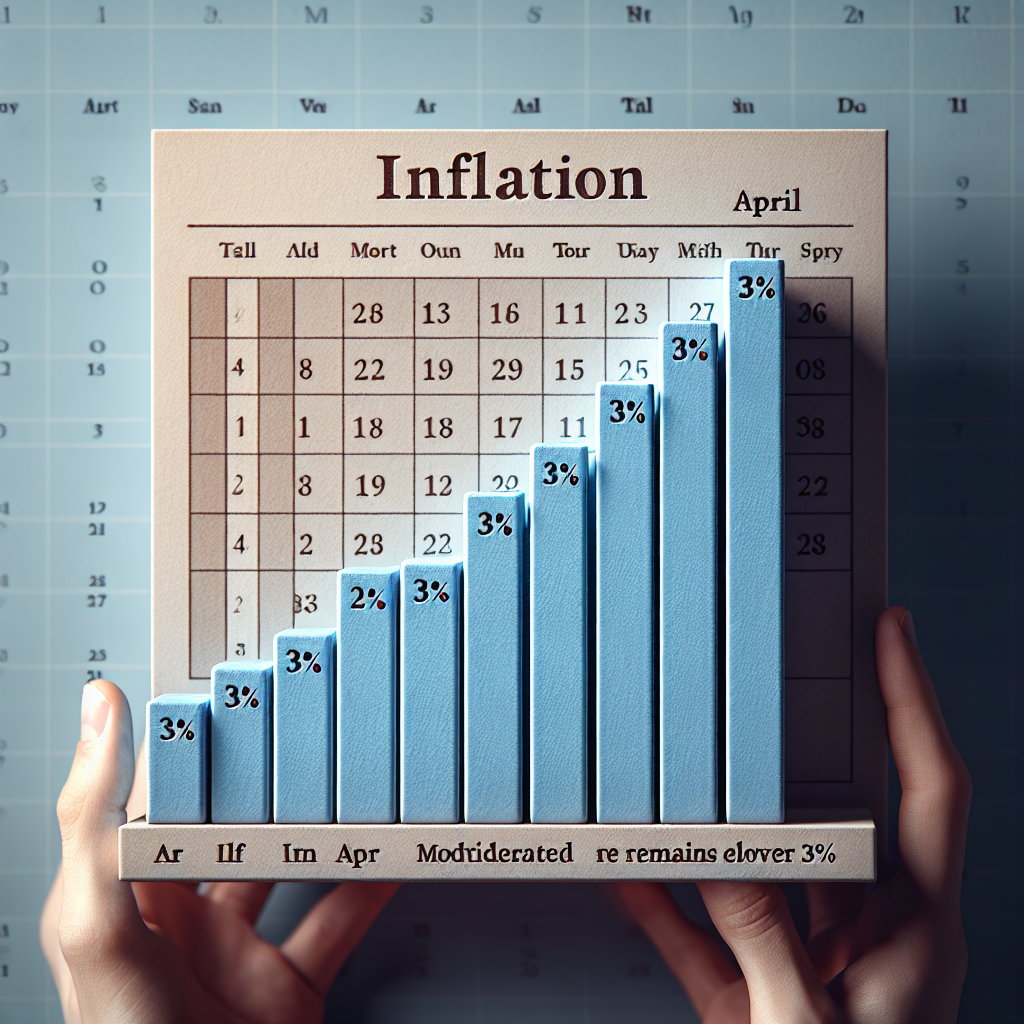-
Table of Contents
- Inflation Moderates in April, Remains Above 3%
- Understanding Inflation
- Types of Inflation
- Recent Trends in Inflation
- Factors Contributing to Moderation
- Sectoral Analysis
- Housing
- Food
- Healthcare
- Case Studies
- Automotive Industry
- Technology Sector
- Policy Responses
- Interest Rate Hikes
- Balance Sheet Reduction
- Global Perspective
- Europe
- Asia
- Future Outlook
- Potential Scenarios
- Conclusion
Inflation Moderates in April, Remains Above 3%

Inflation is a critical economic indicator that affects everyone, from policymakers to everyday consumers. In April, inflation showed signs of moderation but remained above the 3% mark, raising questions about the future trajectory of prices and the broader economic implications. This article delves into the recent trends in inflation, the factors contributing to its moderation, and the potential impacts on various sectors of the economy.
Understanding Inflation
Inflation refers to the rate at which the general level of prices for goods and services rises, eroding purchasing power. It is typically measured by the Consumer Price Index (CPI) and the Producer Price Index (PPI). A moderate level of inflation is generally considered healthy for the economy, as it encourages spending and investment. However, when inflation rises too quickly, it can lead to economic instability.
Types of Inflation
- Demand-Pull Inflation: Occurs when demand for goods and services exceeds supply.
- Cost-Push Inflation: Results from an increase in the cost of production, such as higher wages or raw material prices.
- Built-In Inflation: Linked to adaptive expectations, where businesses and workers expect prices to rise and adjust their behavior accordingly.
Recent Trends in Inflation
In April, the inflation rate moderated but remained above 3%, a level that still raises concerns among economists and policymakers. According to the latest data from the Bureau of Labor Statistics (BLS), the CPI rose by 3.2% year-over-year, down from 3.5% in March. This moderation is a positive sign, but the rate is still higher than the Federal Reserve’s target of 2%.
Factors Contributing to Moderation
Several factors have contributed to the recent moderation in inflation:
- Supply Chain Improvements: The easing of supply chain disruptions has helped stabilize prices for many goods.
- Energy Prices: A decline in energy prices, particularly oil, has contributed to lower overall inflation.
- Monetary Policy: The Federal Reserve’s interest rate hikes have started to take effect, cooling demand.
Sectoral Analysis
While the overall inflation rate has moderated, its impact varies across different sectors of the economy. Here, we examine how inflation is affecting key sectors such as housing, food, and healthcare.
Housing
The housing sector has been one of the most affected by inflation. In April, housing costs continued to rise, albeit at a slower pace. The Shelter Index, which includes rent and owners’ equivalent rent, increased by 4.5% year-over-year. High housing costs are a significant concern as they directly impact consumers’ disposable income and overall economic well-being.
Food
Food prices have also been a major contributor to inflation. In April, the Food Index rose by 3.8% year-over-year. Several factors, including supply chain disruptions, labor shortages, and higher transportation costs, have driven up food prices. Consumers are feeling the pinch at grocery stores and restaurants, leading to changes in spending habits.
Healthcare
Healthcare costs have seen a more moderate increase compared to other sectors. The Medical Care Index rose by 2.9% year-over-year in April. While this is lower than the overall inflation rate, rising healthcare costs remain a concern for many Americans, particularly those without adequate insurance coverage.
Case Studies
To better understand the impact of inflation, let’s look at two case studies: the automotive industry and the technology sector.
Automotive Industry
The automotive industry has been significantly impacted by inflation, particularly due to supply chain disruptions and semiconductor shortages. In April, the price of new vehicles rose by 5.1% year-over-year. Used car prices also saw a substantial increase, rising by 6.7%. These price hikes have made it more challenging for consumers to afford new and used vehicles, leading to a decline in sales.
Technology Sector
The technology sector has experienced mixed effects from inflation. On one hand, the cost of raw materials and components has increased, leading to higher production costs. On the other hand, strong demand for technology products has allowed companies to pass on these costs to consumers. In April, the price of consumer electronics rose by 2.5% year-over-year. While this is lower than the overall inflation rate, it still represents a significant increase for a sector that typically sees price declines due to technological advancements.
Policy Responses
Policymakers have been closely monitoring inflation and implementing measures to address it. The Federal Reserve has taken several steps to combat rising prices, including raising interest rates and reducing its balance sheet. These actions are aimed at cooling demand and bringing inflation back to the target level of 2%.
Interest Rate Hikes
The Federal Reserve has raised interest rates multiple times over the past year in response to rising inflation. Higher interest rates make borrowing more expensive, which can help reduce consumer spending and business investment, thereby cooling demand and slowing inflation.
Balance Sheet Reduction
In addition to raising interest rates, the Federal Reserve has also begun reducing its balance sheet by selling off assets acquired during its quantitative easing programs. This process, known as quantitative tightening, aims to reduce the money supply and further cool demand.
Global Perspective
Inflation is not just a domestic issue; it has global implications. Many countries are experiencing similar inflationary pressures, driven by factors such as supply chain disruptions, energy prices, and geopolitical tensions. Understanding the global context can provide valuable insights into the challenges and potential solutions for managing inflation.
Europe
In Europe, inflation has been a significant concern, particularly in the Eurozone. In April, the Eurozone’s inflation rate stood at 3.4%, down from 3.7% in March. The European Central Bank (ECB) has been grappling with similar challenges as the Federal Reserve, including high energy prices and supply chain disruptions. The ECB has also raised interest rates and implemented other measures to combat inflation.
Asia
In Asia, inflation rates vary widely across countries. In Japan, inflation remains relatively low, with the CPI rising by 1.2% year-over-year in April. However, other countries, such as India and China, are experiencing higher inflation rates. In India, the CPI rose by 4.1% year-over-year in April, driven by higher food and energy prices. In China, the CPI increased by 3.3% year-over-year, with similar contributing factors.
Future Outlook
The future trajectory of inflation remains uncertain, with several factors likely to influence its path. These include ongoing supply chain disruptions, energy prices, and the effectiveness of monetary policy measures. While the recent moderation in inflation is a positive sign, it is essential to remain vigilant and adapt to changing economic conditions.
Potential Scenarios
- Continued Moderation: If supply chain issues continue to improve and energy prices remain stable, inflation could continue to moderate, eventually returning to the Federal Reserve’s target of 2%.
- Persistent Inflation: If supply chain disruptions persist or energy prices rise again, inflation could remain elevated, requiring further policy interventions.
- Deflationary Pressures: In a less likely scenario, aggressive monetary policy measures could lead to deflationary pressures, which could have their own set of economic challenges.
Conclusion
In April, inflation showed signs of moderation but remained above the 3% mark, highlighting the ongoing challenges facing the economy. While improvements in supply chains and declining energy prices have contributed to this moderation, the overall inflation rate is still higher than desired. The impact of inflation varies across different sectors, with housing, food, and healthcare being particularly affected.
Policymakers have implemented several measures to combat rising prices, including interest rate hikes and balance sheet reduction. However, the future trajectory of inflation remains uncertain, with several potential scenarios that could unfold. Understanding the factors driving inflation and the policy responses can help individuals and businesses navigate this complex economic landscape.
As we move forward, it is crucial to remain vigilant and adaptable to changing economic conditions. By staying informed and proactive, we can better manage the challenges and opportunities presented by inflation.








